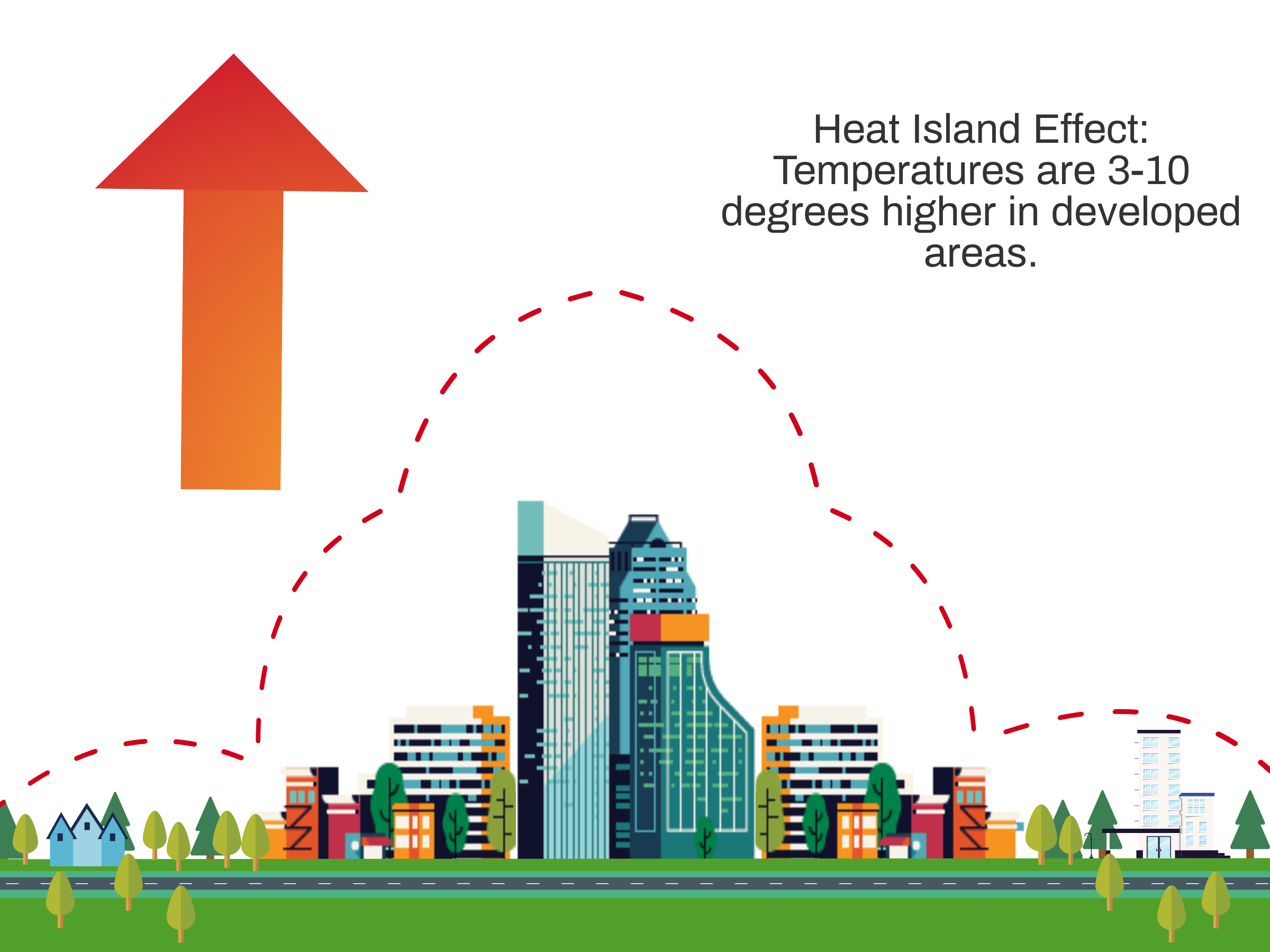If you have ever noticed that it was hotter in a heavily developed area compared to a mostly natural, nearby area, then you have experienced the “heat island effect”.
The heat island effect mostly occurs in cities, where the built environment absorbs sunlight and radiates heat back into the environment, creating pockets of higher temperatures. Since cities have significantly more buildings, roadways, and man-made structures than rural areas, they hold on to more heat than rural areas over a longer period.
Extreme heat can harm the public's health, causing issues such as heat stroke, heat exhaustion and heat cramps, among other health impacts. The City is working to address the heat island effect through the Urban Heat Island Ordinance. To learn more, click on the Urban Heat Island Ordinance dropdown below.


